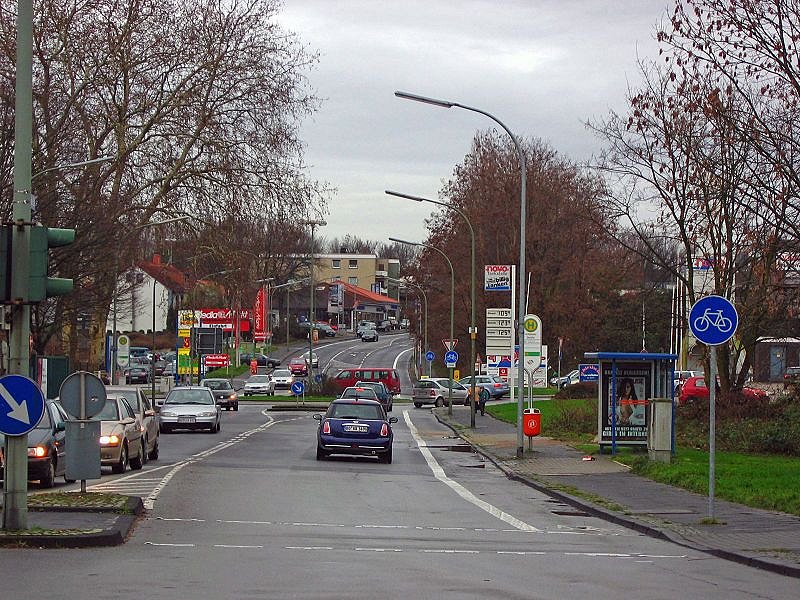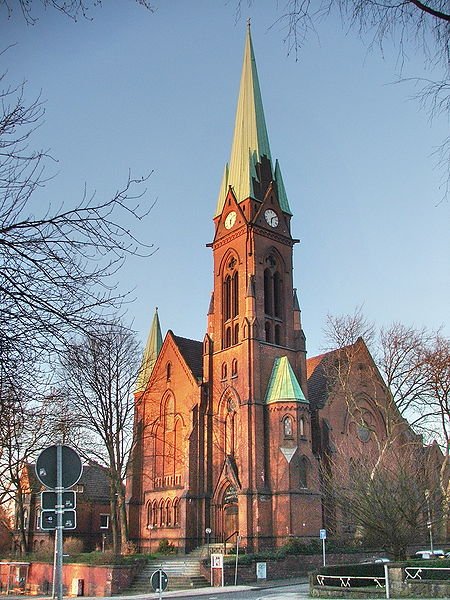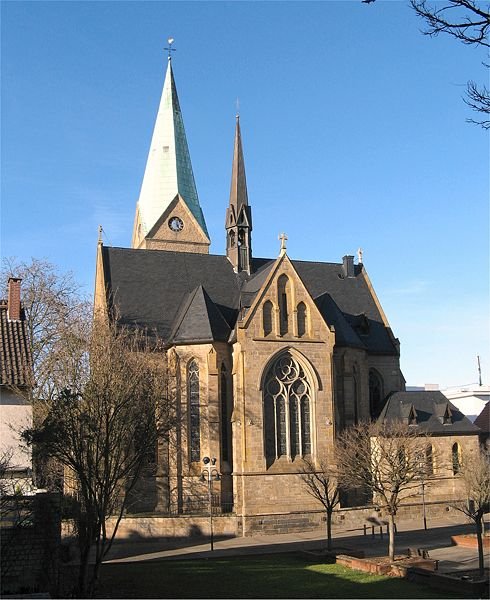 Bochum, Germany
Bochum, GermanySource: https://commons.wikimedia.org/wiki/File:Hofstede0011.jpg
Author: Rasi57

Bochum is a city in the Ruhr area, in North Rhine-Westphalia. It covers 145.4 sq km (56.1 sq mi) and has a population of 375,000 (2011 estimate). The city observes the Central European Time (UTC+1) and in summer the Central European Summer Time (UTC+2).
The history of Bochum began when Charlemagne set up a royal court here. It was first mentioned in 1041 as Cofbuokheim. Over time, the name evolved to Bochum. It was granted its town charter by Court Engelbert II in 1321. It was just a small village until the 19th century, when coal mining and steel production in the Ruhr area spurred the growth of the cities there, Bochum included.
 Evangelische Kirche Petri, Bochum
Evangelische Kirche Petri, BochumSource: https://commons.wikimedia.org/wiki/File:Evangelische_Kirche_Petri_in_Bochum.jpg
Author: Simplicius

During the Second World War, the Jews in Bochum suffered under the Nazis while the German civilians suffered under Allied bombardment. The reason for targetting Bochum was its position as a weapons manufacturing center. Over 500 Jews in Bochum lost their lives that began with Kristallnacht on 9 November 1938. Many managed to escape to the Netherlands and England.
Bochum was occupied by British forces after the war. The city began to develop as a cultural center for the Ruhr area. Its economy also evolved, moving away from coal mining towards cleaner industries. It established a university in 1965, the Ruhr University, which is the first university in the Ruhr area and the first to be founded in Germany after the Second World War.
 Gertrudiskirche in Wattenscheid, Bochum
Gertrudiskirche in Wattenscheid, BochumSource: https://commons.wikimedia.org/wiki/File:Bochum_Wattenscheid_080114_028_00.jpg
Author: HJW

Visiting Bochum
If you are flying in, the nearest airport is the Düsseldorf International Airport (DUS) about 50 km away. From the airport, take the train heading towards Dortmund to reach Bochum.Places of Interest in Bochum
- Altes Brauhaus Rietkötter
Dating back to 1630, this is one of the oldest houses in the city. At one time a private residence, a brewery and today a restaurant, it continues to serve beer that is brewed in-house. - Bochum City Hall
New by comparison with the town halls in other German cities, the Bochum City Hall, dating from 1931, was designed as a modern office building but in the Renaissance style. - Christuskirche
One of the most beautiful churches in Europe, built in the neo-Gothic style in 1879. - Deutsches Bergbau-Museum
The German Mining Museum is the leading museums on the subject of mining. - Museum of Historical Medieval Tools
Museum exhibiting the tools used by craftsmen and artisans during the medieval age. - Mutter Wittig
Baroque-style building in the town center built in 1870. - Pauluskirche
The main Protestant church in Bochum. It was built in 1655 after the Lutherans managed to erect their own church, and not have to share the same place of worship with the Catholics. - Propsteikirche St. Peter und Paul
Oldest church in Bochum dating back to AD 785, built by Charlemagne. - Railway-Museum Bochum-Dahlhausen
A museum showcasing vintage trains and steam engines. - Ruhr University Botanical Gardens
Garden exhibiting thousands of plants from all over the world. - Stiepeler Dorfkirche
A small thousand-year-old church built by Countess Imma von Stiepel. - Zeche Hannover
A former mine, now preserved as a museum, located at the border with Herne.
 Latest updates on Penang Travel Tips
Latest updates on Penang Travel Tips

Copyright © 2003-2025 Timothy Tye. All Rights Reserved.

 Go Back
Go Back